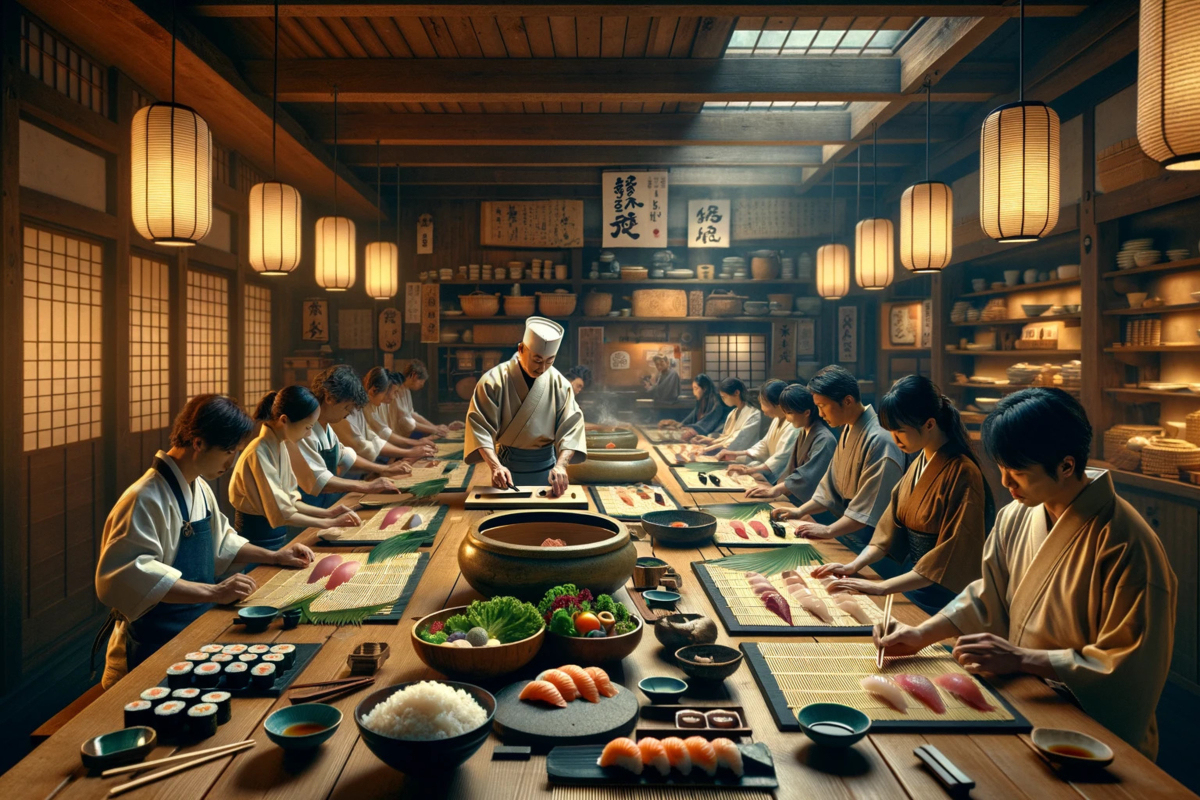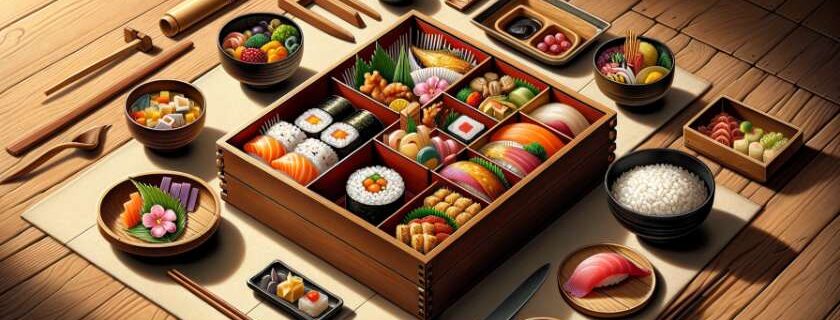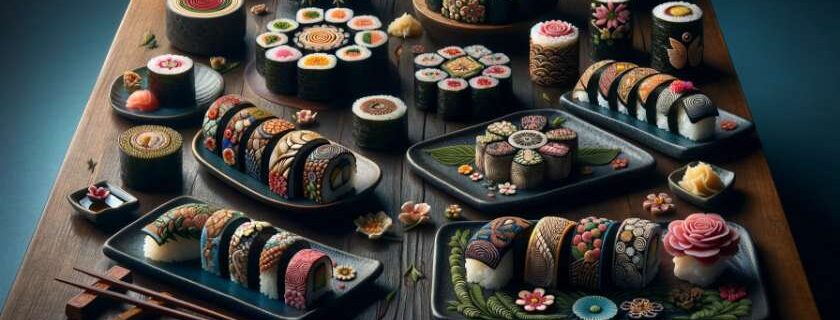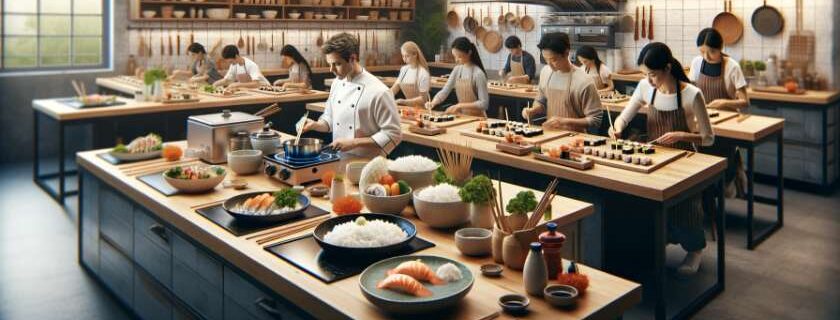
Kyoto, the heart of traditional Japan, offers more than just its historical landmarks and serene landscapes; it’s a haven for culinary enthusiasts seeking to delve into the rich tapestry of Japanese cuisine.
From the intricately designed bento boxes to the delicate art of sushi making, the city’s cooking classes provide a hands-on approach to understanding the country’s celebrated food culture. These classes not only teach the techniques behind iconic Japanese dishes but also imbue participants with a deeper appreciation for the culinary traditions that have been passed down through generations.
Whether you’re a seasoned chef or a curious foodie, Kyoto’s cooking classes invite you to step into the world of authentic Japanese cooking.
- Key Takeaways
- 10 Best Cooking Classes In Kyoto
- 1. Bento Cooking Class in Shimogyō-ku
- 2. Traditional Okonomiyaki Cooking Class
- 3. Make Your Own Bento Box Lunch
- 4. Traditional Izakaya Cooking Class for Passionate Home Cooks
- 5. Art Sushi Class At Local Home
- 6. Traditional Japanese Wagashi Making Class
- 7. Washoku Cooking Class near Fushimi Inari Shrine
- 8. Private Sushi Masterclass
- 9. Nishiki Market Food Tour with Cooking Class
- 10. Authentic Japanese Sushi Cooking Class
- Summary
- Frequently Asked Questions
- Who can join cooking classes in Kyoto?
- What types of dishes are taught in these cooking classes?
- Do participants need to bring any tools or ingredients?
- Are there vegetarian or vegan options available in these cooking classes?
- How long do these cooking classes last?
- Is English support available in these cooking classes?
- Can children participate in these cooking classes?
- How much do cooking classes in Kyoto cost?
- How can I book a cooking class in Kyoto?
Key Takeaways
- Kyoto’s cooking classes offer a hands-on approach to learning the art of Japanese cuisine, covering a range of dishes from bento boxes to sushi and traditional sweets, suitable for both seasoned chefs and culinary novices.
- These classes not only teach cooking techniques but also provide cultural insights into Japanese culinary traditions, including the significance of bento, the art of Wagashi, and the dining culture of Izakaya.
- Participants in these classes can expect an immersive culinary experience that combines food preparation with cultural immersion, from market tours to dining etiquette, enhancing their appreciation of Japanese food and culture.
10 Best Cooking Classes In Kyoto

1. Bento Cooking Class in Shimogyō-ku
This class offers a comprehensive dive into the art of preparing a traditional Japanese bento box, covering a wide range of dishes such as sushi rolls, tamagoyaki (Japanese rolled omelet), tempura, teriyaki chicken, and miso soup.
Located in Shimogyō-ku, the course emphasizes not just the cooking techniques but also the cultural background and significance of bento in Japan. Participants get the opportunity to savor the meal they’ve prepared, making it a fulfilling experience that caters to various dietary requirements. This class is perfect for those looking to bring a piece of Japanese culinary culture back home, complete with recipes.
2. Traditional Okonomiyaki Cooking Class
This class specializes in teaching the preparation of Okonomiyaki, a beloved Japanese savory pancake. Praised for its informative and entertaining approach, the class is led by knowledgeable instructors who are both generous with their expertise and humorous, making the learning process enjoyable.
Participants find the food superb and the class atmosphere fun, offering an authentic glimpse into Japanese cuisine and culture.
3. Make Your Own Bento Box Lunch
Recognized for its organization and extensive menu, this class enables participants to create a diverse bento box lunch. The class is structured to provide hands-on experience, with individual cooking stations and a combination of personal and assisted preparation.
The highlights include a variety of dishes that showcase the depth of Japanese cuisine, with clear instructions provided in English, ensuring a welcoming environment for both cooks and food enthusiasts.
4. Traditional Izakaya Cooking Class for Passionate Home Cooks
This class captures the essence of Izakaya, offering a unique opportunity to learn about this integral part of Japanese dining culture. Friendly chefs guide participants through the preparation of six traditional dishes, allowing for a dynamic and engaging culinary experience.
The class is designed to emulate the Izakaya atmosphere, complete with eating sessions that mimic the real dining experience, making it an immersive and satisfying culinary adventure.

5. Art Sushi Class At Local Home
Situated near Nijo Castle, this private class delves into the decorative world of Kazari Maki sushi, blending culinary skills with artistic expression[1]. Participants are invited into a local’s home, adding an authentic touch to the learning experience. The class not only teaches the technical aspects of sushi making but also explores its cultural significance, offering insights into the Kawaii aspect of Japanese cuisine.
6. Traditional Japanese Wagashi Making Class
Focused on Wagashi, traditional Japanese confections, this class introduces participants to the delicate art of sweet making.
The experience is enriched by the opportunity to pair the handmade treats with award-winning tea, emphasizing the aesthetic and culinary finesse involved in Wagashi creation. This class offers a rare glimpse into a less-explored facet of Japanese cuisine, ideal for those looking to expand their culinary repertoire.
7. Washoku Cooking Class near Fushimi Inari Shrine
Set in the picturesque vicinity of Fushimi Inari Shrine, this class offers an authentic experience in preparing Washoku, Japan’s traditional food.
The class includes a visit to a Japanese supermarket, providing a deeper understanding of the ingredients and culinary practices unique to Japan. It’s a holistic experience that combines cooking with cultural immersion, perfect for food enthusiasts eager to explore Japanese cuisine at its roots.
8. Private Sushi Masterclass
This intimate class is designed for those looking to refine their sushi-making skills, offering personalized instruction from seasoned sushi chefs.
With an emphasis on premium seafood and ingredients, participants learn to craft perfect nigiri, gunkan, and hosomaki sushi. It’s an exceptional opportunity for sushi aficionados to elevate their craft in the heart of Kyoto.
9. Nishiki Market Food Tour with Cooking Class
A culinary journey that begins in the bustling Nishiki Market, this experience combines food sampling with hands-on cooking lessons.
Participants explore the market’s rich offerings under the guidance of a local Japanese guide before heading to a cooking studio to prepare a Kyoto dish. This tour and class package is an excellent way to immerse oneself in the local food culture, from street food tasting to cooking local delicacies.
10. Authentic Japanese Sushi Cooking Class
This class offers a deep dive into Japanese home cooking, focusing on sushi preparation alongside other traditional dishes. It provides a comprehensive overview of Japanese culinary techniques, from washing rice to making dashi stock, and includes a cultural component that covers dining etiquette and the history of Japanese cuisine.
Ideal for those looking to gain a thorough understanding of Japanese cooking and culture, this class promises a rich and informative experience.

Summary
Each class offers a unique perspective on Japanese cuisine, blending cooking skills with cultural insights to provide a rich, immersive experience. Whether you’re a seasoned cook or a culinary novice, these classes in Kyoto promise to enhance your appreciation of Japanese food and culture.
Frequently Asked Questions
Who can join cooking classes in Kyoto?
Anyone interested in learning about Japanese cuisine, from seasoned chefs to culinary novices, can join cooking classes in Kyoto. These classes cater to a wide range of dietary requirements and skill levels.
What types of dishes are taught in these cooking classes?
The dishes taught in these cooking classes vary widely, including bento boxes, sushi, Okonomiyaki (Japanese savory pancakes), traditional sweets like Wagashi, and other authentic Japanese dishes.
Do participants need to bring any tools or ingredients?
Typically, participants do not need to bring any tools or ingredients to the cooking classes in Kyoto, as these are usually provided by the class organizers. It’s always best to check with the specific class for any special requirements.
Are there vegetarian or vegan options available in these cooking classes?
Yes, many cooking classes in Kyoto offer vegetarian or vegan options, ensuring that participants with dietary restrictions can still enjoy learning about and preparing Japanese cuisine.
How long do these cooking classes last?
The duration of cooking classes in Kyoto can vary, ranging from a few hours for single sessions to full-day experiences that may include market tours and cultural lessons.
Is English support available in these cooking classes?
Yes, many cooking classes in Kyoto provide English support, with instructions and explanations offered in English to accommodate international participants.
Can children participate in these cooking classes?
While some cooking classes in Kyoto are suitable for children, it’s important to check the age requirements for each class. Classes offering simpler dishes or specifically designed for families are more likely to accommodate younger participants.
How much do cooking classes in Kyoto cost?
The cost of cooking classes in Kyoto varies depending on the type of class, the dishes being prepared, and the duration of the class. Prices can range from relatively affordable to more premium experiences, especially those involving high-quality ingredients or private instruction.
How can I book a cooking class in Kyoto?
Cooking classes in Kyoto can be booked online through various platforms that specialize in culinary experiences, directly through the websites of cooking schools, or at tourist information centers in Kyoto. It’s advisable to book in advance, especially during peak tourist seasons, to secure a spot.




